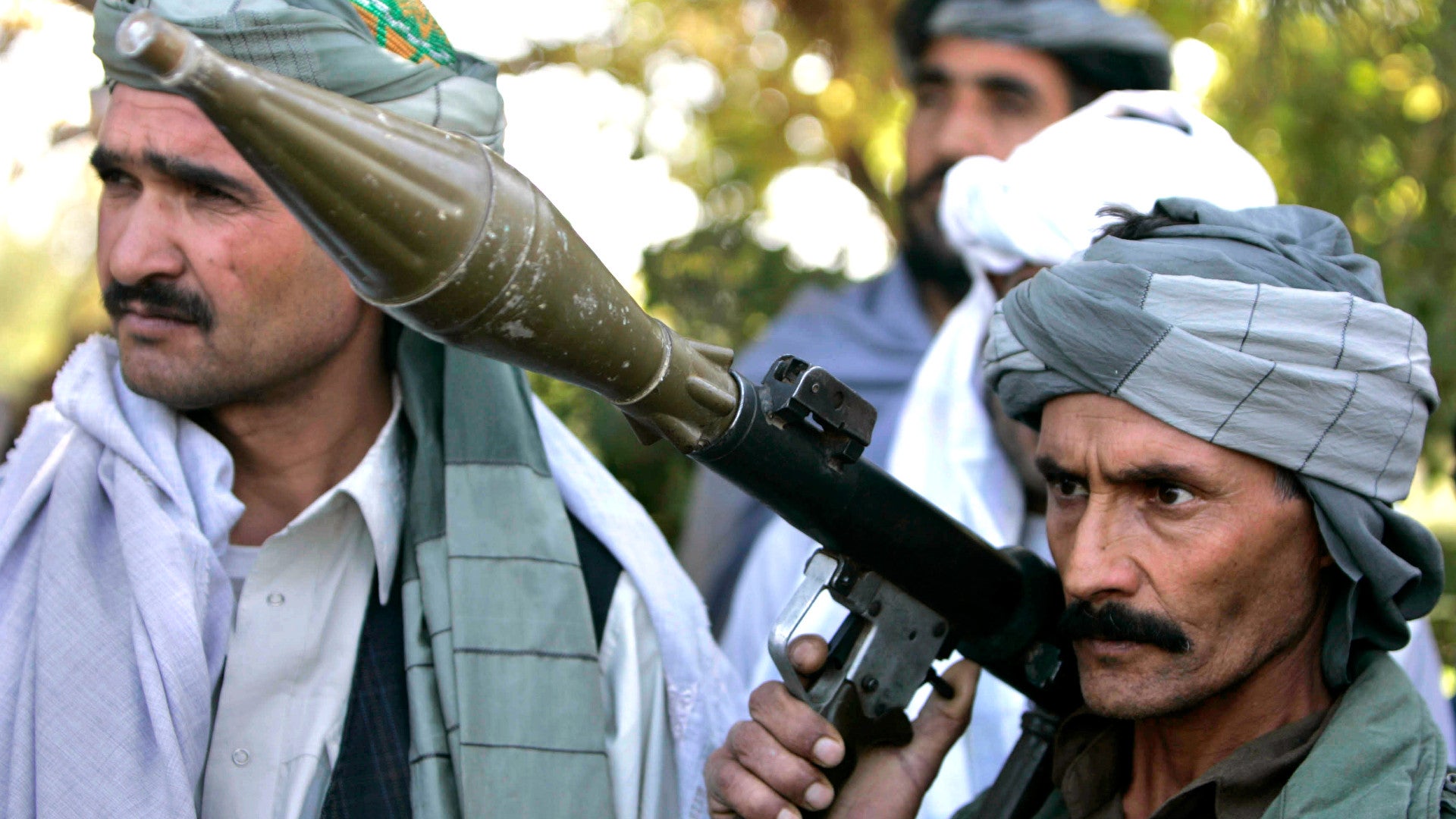The Taliban has tried to assassinate U.S. Secretary of Defense James Mattis months after he bluntly acknowledged the Afghan government and its American-led coalition partners were losing the war in the country against Taliban insurgents and terrorists, including ISIS. The brazen attack on Hamid Karzai International Airport in the capital Kabul comes as the U.S. government is still struggling to implement a new vision for the conflict.
In the attack on Sept. 27, 2017, the Afghan insurgents fired at least 40 rounds at the airport, including rocket propelled grenades and mortar bombs, according to reports. Mattis had earlier arrived for an official visit, but the timing was unannounced precisely due to these types of security concerns.
There is no indication that the Secretary was ever in any actual danger from the inaccurate bombardment. It did reportedly kill one civilian, wound nearly a dozen more, and lead to a firefight in a nearby neighborhood where Afghan troops killed four militants. An official statement from the U.S.-led coalition said it had conducted an air strike in support of the Afghan response, but that “tragically, one of the missiles malfunctioned, causing several casualties.”
America’s longest war
“A lot is riding on this of course as we look toward how do we put an end to this fighting and the threat of terrorism to the Afghan people, to the international community and how do we put this into a path of political reconciliation,” the top American defense official said later in the day at the Presidential Palace, speaking alongside Afghan President Ashraf Ghani. “We are here to set the military and security conditions for that but recognize ultimately the responsibility for the Afghan leadership under your direction.”
NATO Secretary General Jens Stoltenberg had also traveled to Afghanistan with Mattis. U.S. Army General John Nicholson, head of all American and coalition troops in the country, joined them at the press conference.
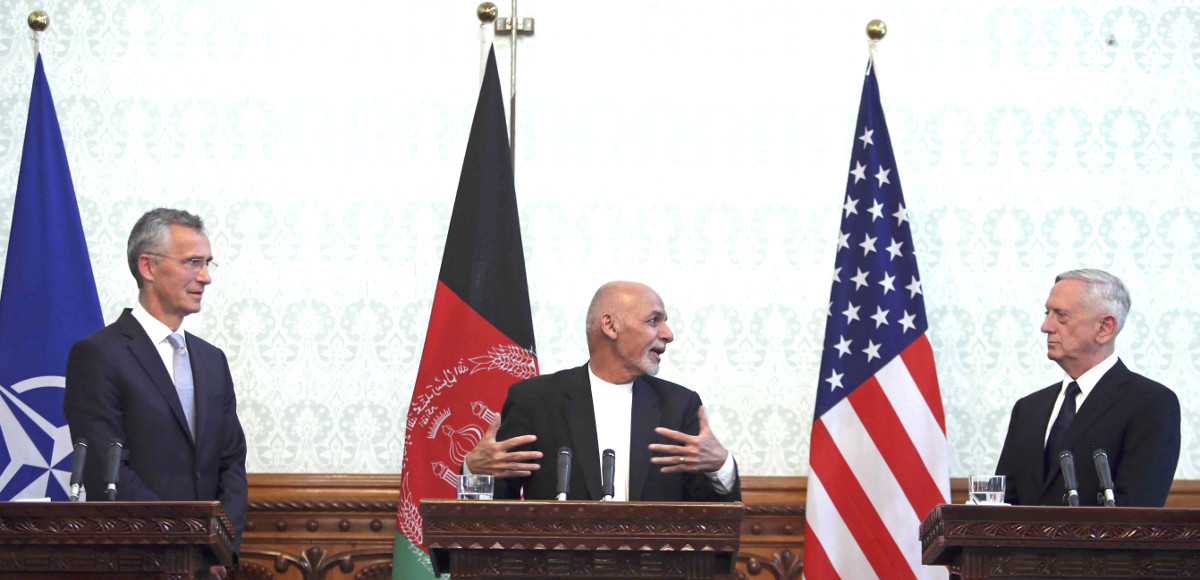
The trip comes more than a month after President Donald Trump unveiled a new U.S. government strategy for the war in Afghanistan and the broader security situation in South Asia. Trump’s speech described what appeared to be largely a rehash of old ideas and, more worryingly, was often vague and contradictory, offering no clear indication of how the conflict would actually end.
“Ultimately, it is up to the people of Afghanistan to take ownership of their future, to govern their society, and to achieve an everlasting peace,” Trump declared in his speech on Aug. 21, 2017. “We are a partner and a friend, but we will not dictate to the Afghan people how to live, or how to govern their own complex society. We are not nation-building again. We are killing terrorists.”
But in spite of this, Trump promised a whole-of-government approach that included diplomatic and economic efforts, as well as a dramatically stepped up military campaign. He also implored allies, chiefly India, to step up economic and other developmental assistance for Afghanistan. These sorts of engagements have been the main components of the past nation building the president had just decried.
Trump also said support for Afghanistan would not be “blank check” and had to be matched by real progress on the part of its government and security forces, almost identical to language President Barack Obama used in his own policy speech in 2009. In addition, Trump, again as Obama had done before, zeroed in on the need for Pakistan to do more to stop insurgents and terrorists from operating freely on their side of the border. The Pakistani government has repeatedly and forcefully denied it is unwilling or unable to act against these groups.
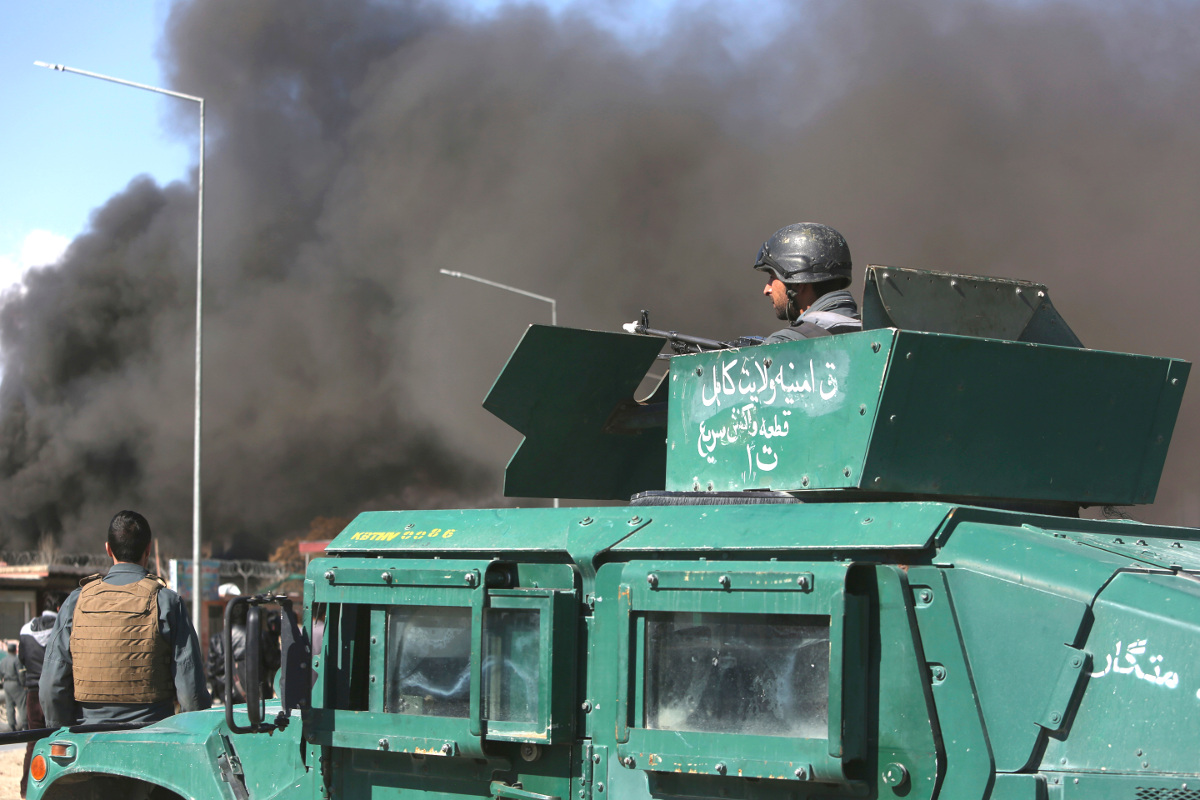
A new-ish strategy
The bulk of Trump’s new provisions seemed to be largely tactical rather than strategic in nature. Most pointedly, the “strategy” focused heavily on the relaxation of unspecified “restrictions” on how and when American forces and their partners can conduct operations. Many interpreted this mainly as an intention to reduce the existing emphasis on avoiding civilian casualties, which the Trump Administration had already put into practice in Iraq, Syria, and elsewhere.
“Micromanagement from Washington, D.C. does not win battles,” Trump said in his big reveal. “They are won in the field drawing upon the judgment and expertise of wartime commanders and frontline soldiers acting in real time, with real authority, and with a clear mission to defeat the enemy.”
The policy announcement had little in the way of details on what sort of metrics the U.S. government would use to define progress and success on and off the battlefield, nor what sort of force increases were coming. Trump insisted that this was part of his campaign promise to keep this information secret and prevent it from giving America’s enemies an edge.
“I’ve said it many times how counterproductive it is for the United States to announce in advance the dates we intend to begin, or end, military options,” Trump said. “We will not talk about numbers of troops or our plans for further military activities.”
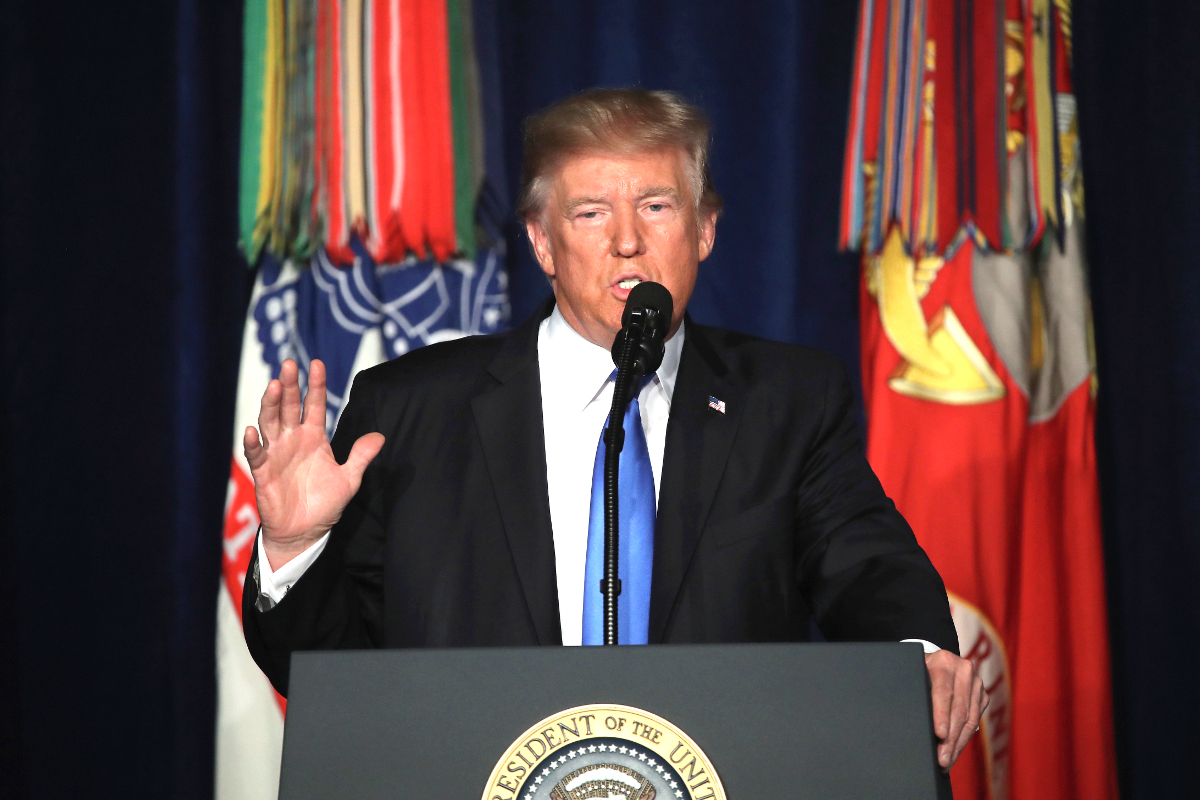
In reality, it seemed to have been in no small part because no one had agreed on the specifics before the speech or that this had gotten left out of the crafting of the policy altogether. The head of the U.S. Air force, the Chairman of the Joint Chiefs of Staff, and Mattis himself have all gone on record since the speech to say they they’ve been finalizing the total number of troops they wanted to add into the mix.
“It’s actually too early to tell what this will mean in terms of plus-ups and reductions,” Chief of Staff of the U.S. Air Force General David Goldfein said in an interview Reuters published on Aug. 22, 2017. “Obviously the Joint Chiefs will work through their plans and make proposals, but I think the guidance was pretty clear from the president last night, and we’re going to go on the offensive and destroy these terrorist networks,” Secretary of the Air Force Heather Wilson, who had joined Goldfein to talk to Reuters, added.
On Aug. 28, 2017, Pentagon spokesman U.S. Army Colonel Rob Manning confirmed to The Washington Post that there was still planning going on despite Trump’s policy announcement. Mattis had told Chairman of the Joint Chiefs of Staff U.S. Marine Corps General Joseph Dunford “to put together a plan to achieve the strategic goals of the president’s strategy.”
The U.S. military has since deployed hundreds of additional ground troops, as well as sending more F-16 fighter jets and KC-135 tankers to Afghanistan. The use of B-52 bombers flying from Al Udeid Air Base in Qatar, which began in March 2017, has also continued to increase. There was also a troubling admission that not only had the Pentagon grossly underrepresented the number of personnel it had in the country to begin with for years, but that it did not necessary
know the true figure itself.
“The first thing I have to do is ‘level the bubble,’ and account for everybody that is on the ground there now,” Mattis said on Aug. 22, 2017. “The idea being that we’re not going to have different pockets that we are accounting for.”
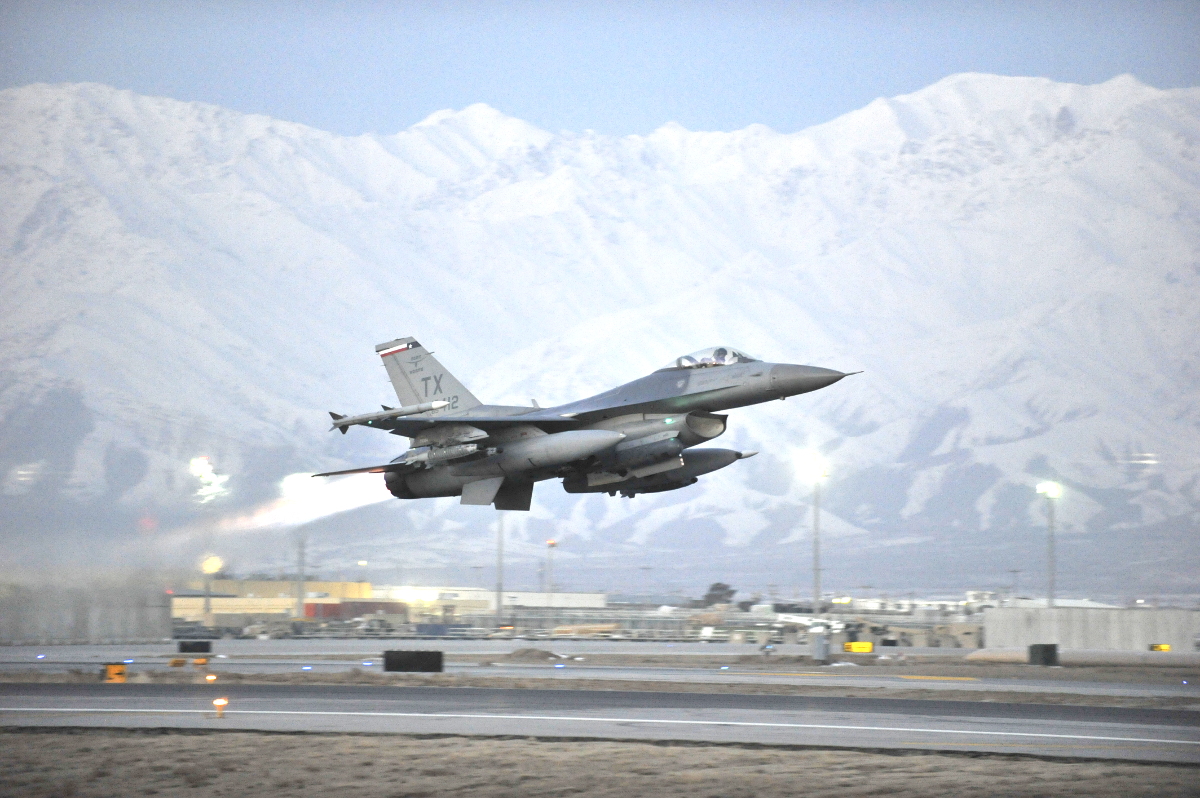
Defining success
Ahead of his visit to Afghanistan, the Secretary of Defense seemed to concede that there were still many unknowns as he traveled to India on Sept. 24, 2017. A reporter asked him specifically about metrics for success in the long-running conflict.
“Yes, I’m not prepared to give those yet, because I need to get to Afghanistan, and I need to sit down in Brussels with the other nations and talk with them together about what the metrics are, and make certain we all put our heads together on this,” he offered in response. “So, once I have that, I’ll get very specific. In general terms, you know what the metrics are, but I want to get a lot more specific.”
He did not elaborate on these apparently obvious standards. This vagary is nothing new and what “it” might be became a key joke in the controversial Netflix original movie about Afghanistan War Machine.

We at The War Zone have noted this lack of a clear goal and desired end state as unfortunately consistent elements of America’s now 16-year campaign in Afghanistan. In June 2017, I wrote:
Unfortunately, there’s no guarantee any of this would work any better than it has in the past. Historically, Afghanistan’s endemic corruption has undercut these efforts. SIGAR [the Special Inspector General for Afghanistan Reconstruction] has routinely found examples of American officials wasting money on unnecessary projects, local contractors defrauding the United States and the Afghan government, and more. The country’s military has routinely proven unable to quickly absorb deliveries of new equipment, even systems that offer only modest improvements, and put them to good use. And we’ve seen in Iraq and Syria that “advise and assist” missions with forces that are not able to operate independently of outside support, or are just insufficiently motivated, can easily translate into what most people would reasonably consider combat for American troops.
Even without seeing Mattis’ final proposal, there are definitely reasons for skepticism of any plan “win” the war in Afghanistan in general, not least of which because so many of the individuals responsible for crafting the new strategy were involved to some degree in crafting the old ones they now say have failed. While he retired from the Marine Corps in 2013, his fellow Marine, General Joseph Dunford, who is now Chairman of the Joint Chiefs of Staff, and the head of American and coalition forces in Afghanistan, U.S. Army General John Nicholson, have been in uniform the whole time. Before taking up his current post, Dunford had held Nicholson’s job title. Nicholson previously served as both a brigade-level and regional commander in Afghanistan. In those positions, they both went on the record with pronouncements that later turned out to be far detached from the reality.
In 2009, Nicholson, then a brigadier general and the top coalition officer in Southern Afghanistan, said he was “unapologetically optimistic” about the upcoming surge of troops that President Barack Obama had recently announced. “To me, to see this increase in U.S. forces means we are now resourcing our counterinsurgency appropriately to accomplish what it is we have laid down in our [Afghanistan-Pakistan] strategy,” he continued in an official military interview. “So I am very encouraged and feel that this is going to make a big difference.”
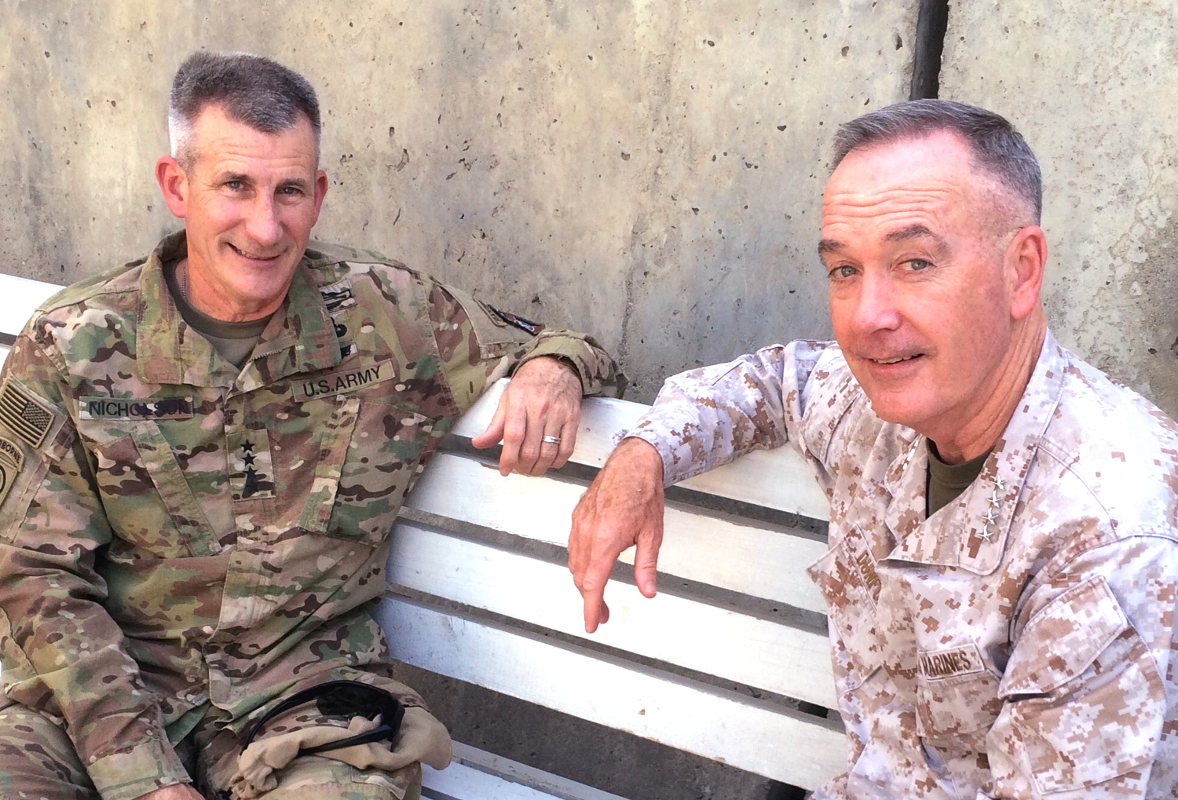
Years of wasted effort
There is no reason to believe these factors are any less of a challenge now than they were earlier in 2017. In fact, evidence has emerged that what some have called “The Afghan Condition” is even worse than had been previously understood.
Earlier in September 2017, SIGAR released an exhaustive and damning report cataloging the failures of more than a decade of a assistance to Afghanistan’s own military, which the U.S. government routinely says is and has to be in the lead as part of any successful resolution to the conflict. The $70 billion dollar effort – a relatively paltry sum that amounts to an average of $5 billion per year, roughly equivalent to what the United States expects to spend on military activities in Europe in the 2018 fiscal year aimed at challenging Russian aggression, but where these
is no active conflict – was beset by problems ranging from the worrisome to the bizarre.
The NATO-run training mission throughout the country generally had less than 50 percent of its authorized manpower, limiting its ability to focus on the development of cohesive security institutions. This meant that most advising and assistance efforts went to combat elements, leaving vital logistics and administrative functions critically underdeveloped.
The impacts of this have been destructive functionally and to overall morale, with Afghan troops unable to maintain a variety of equipment that could be important to combating the Taliban and other groups. We have specifically highlighted these issues here at The War Zone with regards to the Afghan Air Force.

“Critical … capabilities, including aviation, intelligence, force management, and special forces, were not included in early U.S., Afghan, and NATO force-design plans,” the U.S. government watchdog noted in a press release. In turn, “providing advanced Western weapons and management systems to a largely illiterate and uneducated force without appropriate training and infrastructure created long-term dependencies, required increased U.S. fiscal support, and extended sustainability timelines.”
Afghanistan’s special operations forces have since become especially competent and capable, but remain a small portion of the country’s overall security forces. Their abilities and willingness to engage the enemy has meant they’re responsible for the majority of combat operations, though, even when they might be ill suited to the job.
On top of that, the foreign coalition saw the police as of secondary importance to the military.The use of quasi-police forces, such as Afghan Local Police militias and the now defunct
Afghan Public Protection Force, to help fill security voids at the local level was also often counter-productive.
“With limited oversight from and accountability to the Afghan government and the United States, these police forces were reported to have engaged in human rights abuses, drug trafficking, and other corrupt activities, ultimately serving as a net detractor from security,” the full review noted. “While the United States stopped supporting two of the programs due to these issues, the Afghan Local Police continue to operate today.”
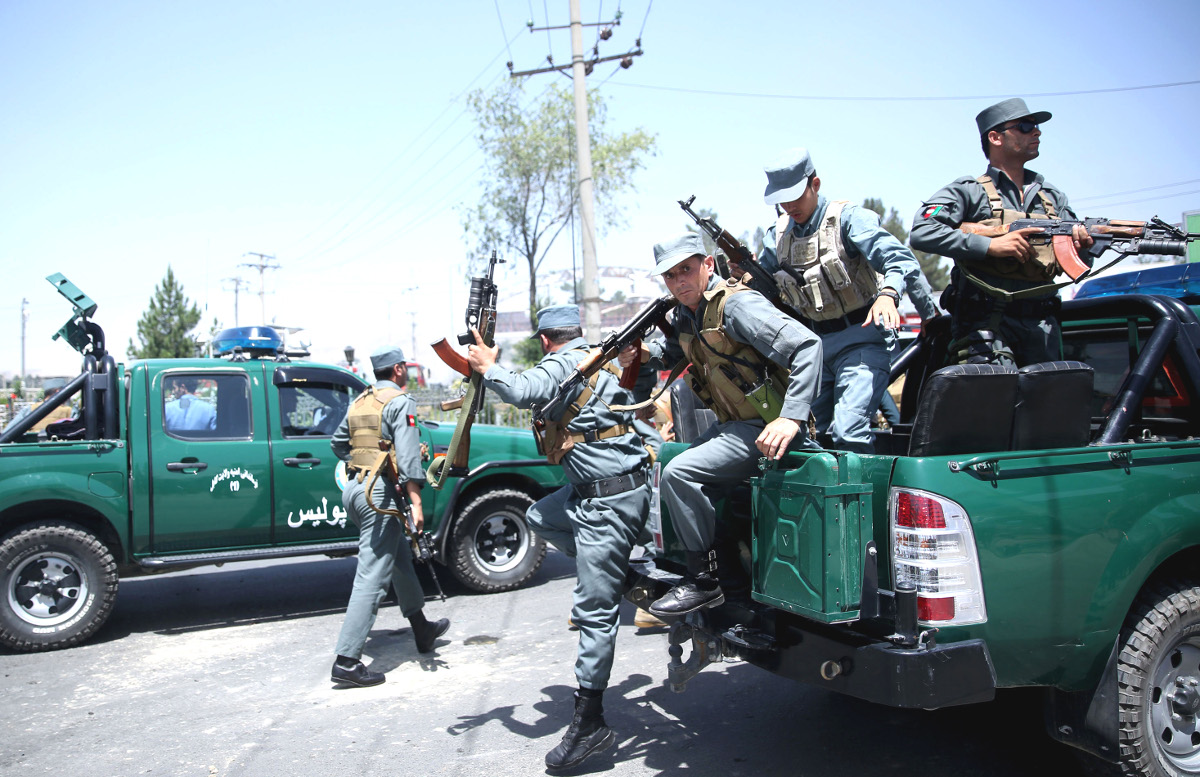
The routine inability for the U.S.-led coalition to properly allocate military advisers and contractors only compounded the difficulties in training the Afghans due to illiteracy, corruption, the persistence of the opium trade, and other factors. In many cases, assisting personnel had no knowledge of the subject matter they were supposed to be teaching.
“One U.S. officer watched TV shows like Cops and NCIS to learn what he should teach [to police,” according to SIGAR’s press release. “In eastern Afghanistan, we met a U.S. Army helicopter pilot assigned to teach policing.”
This would not have been a new revelation to the U.S. military. Thanks to the Freedom of Information Act, we obtained a Department of Defense Inspector General report from 2016 on the training of Afghan intelligence personnel, which, though heavily redacted, described many of the same issues.
“The contractor trainers said they largely relied on materials provided by CSA [combat support agencies] LNOs [liaison officers], unclassified training material from the internet, and their own experience,” according to an unclassified section. Though we don’t know what agencies specifically provided some of the training information, the Pentagon’s combat support agencies
do include the National Security Agency, Defense Intelligence Agency, and National
Geospatial Intelligence Agency.
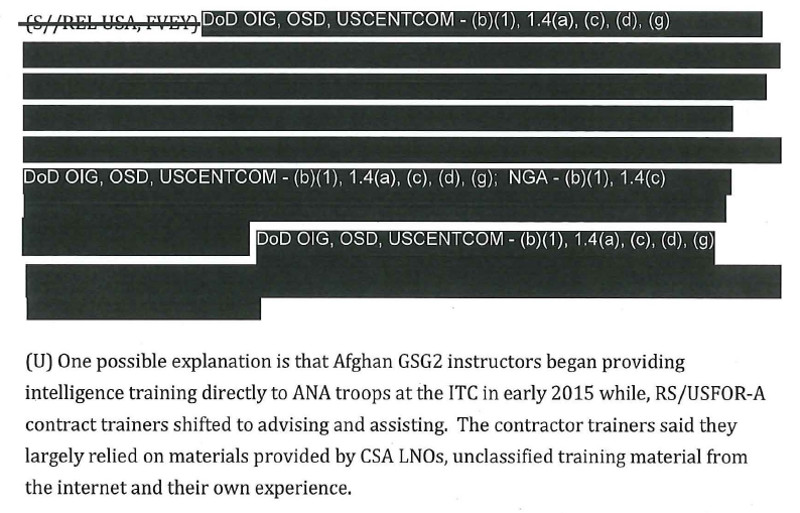
Neither the Department of Defense Inspector General nor the NATO-led mission in Afghanistan has answered queries about whether or not personnel in the country had implemented recommendations in that report, which were almost entirely redacted. The coalition’s public affairs office has yet to answer whether or not it still sees the previous assessment of the existence of an “Afghan Condition” as valid.
Though Mattis downplayed the attack at the airport in Kabul, the Taliban’s ability to strike at such a public location in the country’s capital, heavily monitored by both Afghan and foreign forces, underscores the real state of the conflict. It remains unclear how hundreds or even a few thousand additional American and other coalition troops will be able to do anything besides maintain the status quo stalemate, at least in the near term.
“We are ready to train, assist, and advise,” NATO Secretary General Jens Stoltenberg said on Sept. 27, 2017, a somewhat odd remark given that the alliance has been running training activities for more than a decade already. “We would like to help you break the stalemate that we have seen,” he added, echoing earlier comments by Secretary Mattis and General Dunford.
Key to breaking this cycle will be overcoming the inherent challenges of Afghanistan, as well as finally closing off save havens in Pakistan to militant groups, which has long stymied the U.S. coalition’s efforts to neutralize the Taliban, the Haqqani network, and other factions opposed to the government in Kabul, which exist on both sides of the border. Without truly addressing this multi-national issue, its hard to see how Afghanistan and its partners could truly arrive at any final settlement.
Now that Mattis has seen Afghanistan, and the Taliban have made a pointed attempt to kill him, it remains to be seen what takeaways he’ll have as the Trump Administration continues to try and implement their vision for America’s longest war.
Contact the author: joe@thedrive.com
